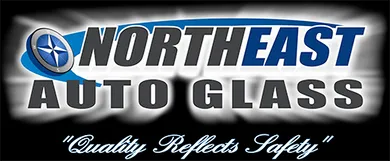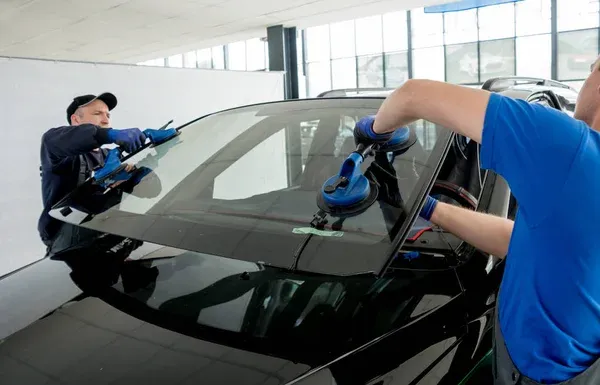Every vehicle owner must navigate the nuances of auto insurance coverage for windshield repair. In this comprehensive guide, we’ll unravel the complexities of insurance policies, focusing on key aspects related to windshield damage in Northeast Pennsylvania.
By gaining clarity on comprehensive coverage, the OEM vs. aftermarket dilemma, coverage limits and deductibles, and navigating the claims process, you empower yourself to make informed decisions regarding windshield repair.
Remember, prioritizing timely repairs is essential not only for maintaining visibility and driving safety but also for minimizing potential costs in the long run.
Comprehensive Coverage: Safeguarding Your Windshield Against the Unexpected
Unfortunately, anything short of comprehensive coverage will not cover windshield repair unless the damage is caused by an accident.
Comprehensive coverage is your shield against non-collision incidents, including windshield damage from rocks, debris, or vandalism.
Understanding the scope of comprehensive coverage is crucial:
- Protection from Various Hazards: Comprehensive insurance covers damage from non-collision events like hailstorms, falling objects, and theft, ensuring your windshield is protected against a wide range of potential threats.
- Deductible Considerations: The deductible for comprehensive coverage can vary. Some policies may offer zero-deductible windshield repair, which means you won’t have to pay out-of-pocket for minor repairs.
- Claim Frequency: Frequent claims for windshield damage can sometimes lead to higher premiums. It’s important to weigh the benefits of filing a claim against the potential long-term impact on your insurance costs.
- Coverage for Replacement: Comprehensive coverage typically includes the cost of windshield replacement if the damage is beyond repair, providing peace of mind in the event of severe damage.
OEM vs. Aftermarket Windshield: Impact on Insurance Coverage
The choice between Original Equipment Manufacturer (OEM) and aftermarket windshields can influence your insurance coverage. Here’s how these options compare:
- Insurance Preferences: Some insurance policies specifically cover OEM parts, while others may cover aftermarket options. OEM windshields are identical to the original parts used in your vehicle, while aftermarket windshields are made by other manufacturers.
- Cost Implications: OEM windshields are usually more expensive than aftermarket ones. Your insurance provider may cover the full cost of an OEM windshield or only up to the cost of an aftermarket equivalent, leaving you to cover the difference.
- Quality and Fit: OEM windshields generally offer a better fit and finish, as they are made to the exact specifications of your vehicle’s manufacturer. This can be a critical factor in ensuring the structural integrity and safety of your vehicle.
- Policy Details: It’s important to review your policy details and discuss with your insurance provider whether they recommend or cover OEM parts for windshield replacement.
Coverage Limits and Deductibles: Managing Costs for Windshield Repair
Understanding coverage limits and deductibles is crucial in determining your financial responsibility for windshield repair. Here’s what to consider:
- Setting Your Deductible: Higher deductibles can lower your insurance premiums but mean more out-of-pocket expenses for repairs. Balancing the deductible with your financial comfort level is key.
- Coverage Limits: Some policies limit the amount covered for windshield repair or replacement, while others may cover everything from full replacement to rock chip repair. For example, Progressive Insurance usually only covers the full repair cost, while drivers may have to pay for replacement with some of their own funds. Knowing these limits helps you understand potential out-of-pocket costs.
- Cost-Benefit Analysis: Evaluate whether the cost of a minor repair is worth filing a claim, considering the potential impact on your premiums and claim history.
- Additional Coverage Options: Some insurers offer specific glass coverage that can be added to your policy, providing more comprehensive protection for your windshield and other vehicle glass components.
Streamlining Claims: Navigating the Windshield Repair Process
Filing a claim for windshield repair involves a series of steps, from assessment to repair or replacement.
Here are the steps on how to navigate the process efficiently:
- Initial Assessment: Contact your insurance provider to report the damage and understand your coverage options. Some insurers may require an inspection or specific documentation of the damage.
- Choose a Repair Shop: Many insurance companies have preferred networks of repair shops. Using a preferred shop can streamline the approval and payment process. Northeast Auto Glass is experienced in working with various insurance providers, making the process smooth and hassle-free.
- Repair or Replacement: Depending on the extent of the damage, your windshield may be repaired or replaced. Quick repairs can prevent further damage and avoid the need for a full replacement.
- Documentation: Keep detailed records of all communications, repair estimates, and invoices. This helps in case of any disputes or follow-up needs with your insurance provider.
- Follow-Up: Ensure that the repair meets your satisfaction and that your insurance claim is fully settled. Any issues should be promptly reported to both the repair shop and your insurer.
For any of your windshield repair and replacement needs in Wilkes-Barre and the surrounding areas, Northeast Auto Glass is here to help. We offer mobile auto glass services, ensuring convenience and top-notch service wherever you are. Feel free to give us a call today to make an appointment and ensure your vehicle’s windshield is in the best possible condition.


